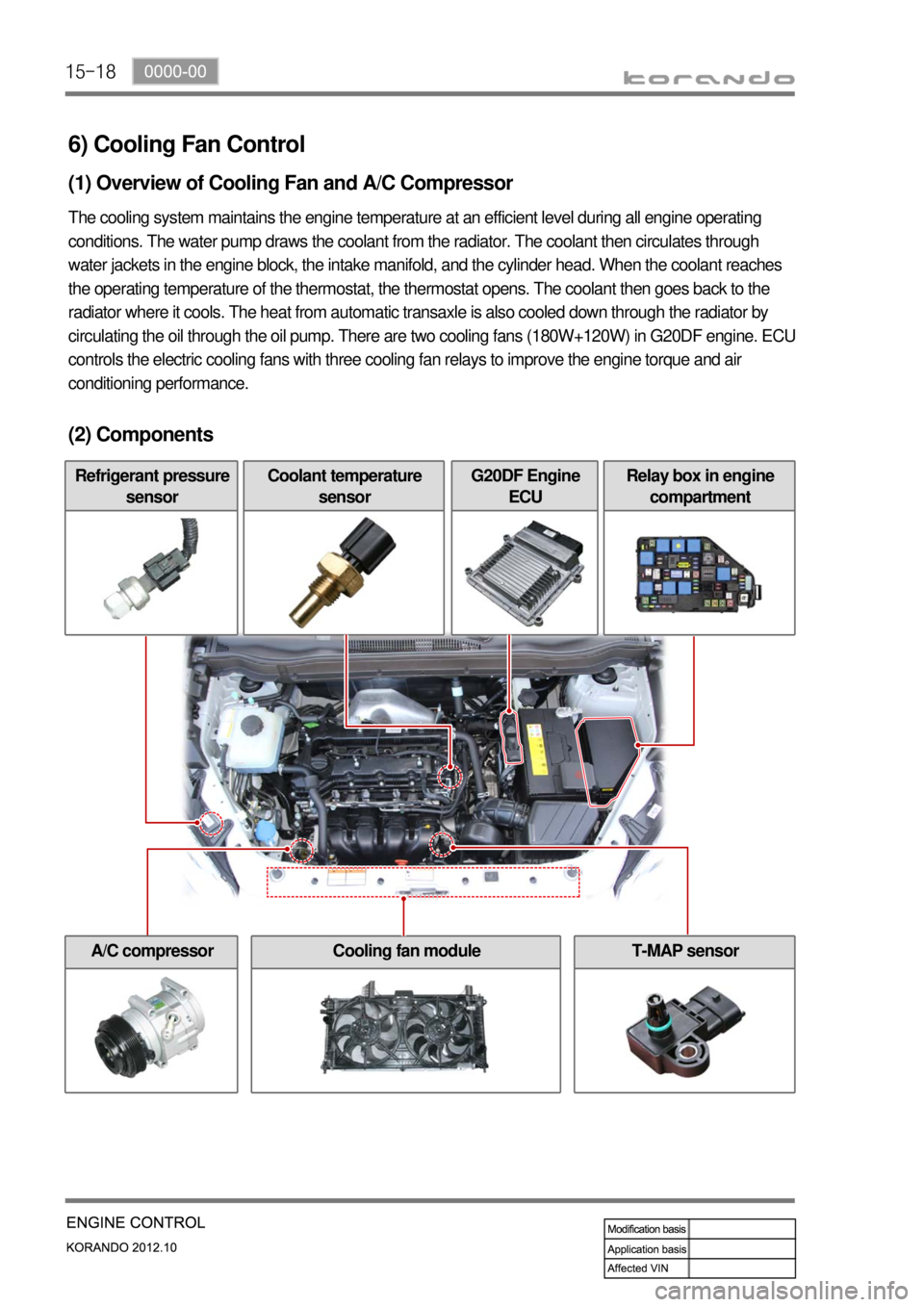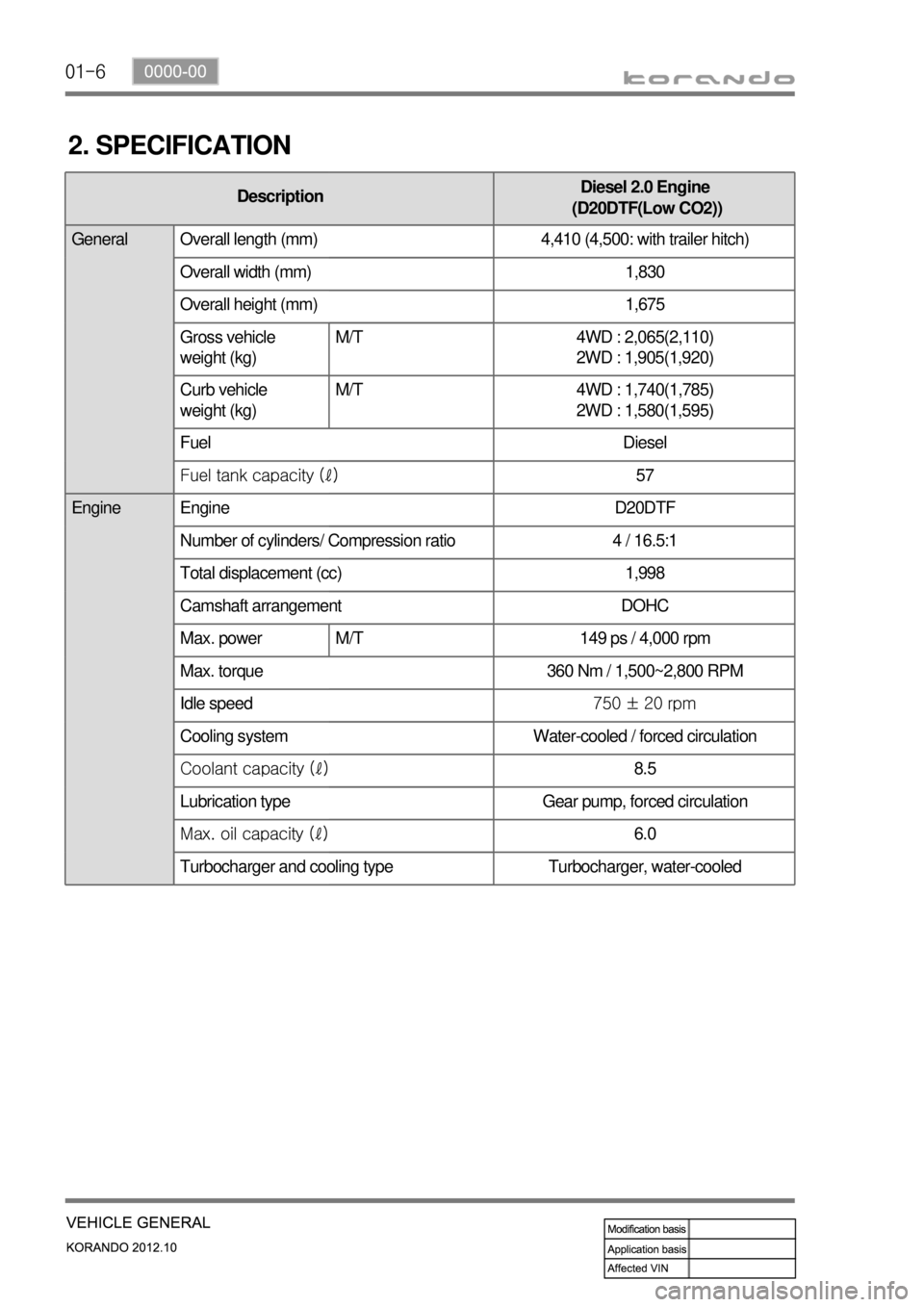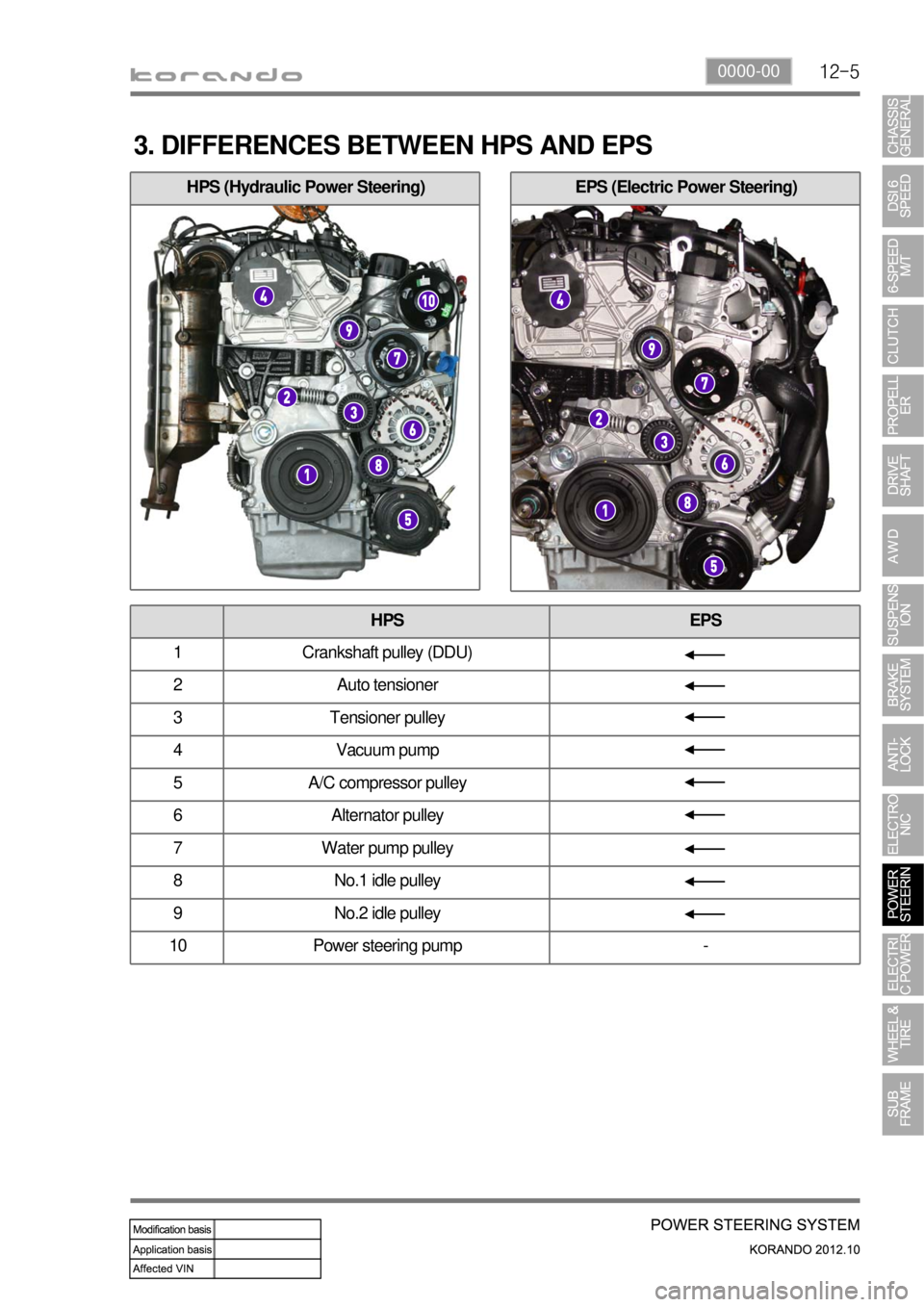08-12
Water pump
The water pump is driven by the engine drive belt and supplies
the coolant to each area of the engine.
Coolant reservoir
Thermostat
When the engine coolant
reaches 90℃, the thermostat
starts to open (fully open at
100℃) and lets the coolant
flow to the radiator to maintain
the engine temperature.
1. OVERVIEW
The coolant system is to keep the engine temperature stable.
2. COMPONENTS
15-18
6) Cooling Fan Control
(1) Overview of Cooling Fan and A/C Compressor
The cooling system maintains the engine temperature at an efficient level during all engine operating
conditions. The water pump draws the coolant from the radiator. The coolant then circulates through
water jackets in the engine block, the intake manifold, and the cylinder head. When the coolant reaches
the operating temperature of the thermostat, the thermostat opens. The coolant then goes back to the
radiator where it cools. The heat from automatic transaxle is also cooled down through the radiator by
circulating the oil through the oil pump. There are two cooling fans (180W+120W) in G20DF engine. ECU
controls the electric cooling fans with three cooling fan relays to improve the engine torque and air
conditioning performance.
(2) Components
Refrigerant pressure
sensorCoolant temperature
sensorG20DF Engine
ECURelay box in engine
compartment
A/C compressorCooling fan moduleT-MAP sensor
01-6
2. SPECIFICATION
DescriptionDiesel 2.0 Engine
(D20DTF(Low CO2))
General Overall length (mm) 4,410 (4,500: with trailer hitch)
Overall width (mm) 1,830
Overall height (mm) 1,675
Gross vehicle
weight (kg)M/T 4WD : 2,065(2,110)
2WD : 1,905(1,920)
Curb vehicle
weight (kg)M/T 4WD : 1,740(1,785)
2WD : 1,580(1,595)
Fuel Diesel
Fuel tank capacity (ℓ)57
Engine Engine D20DTF
Number of cylinders/ Compression ratio 4 / 16.5:1
Total displacement (cc) 1,998
Camshaft arrangement DOHC
Max. power M/T 149 ps / 4,000 rpm
Max. torque 360 Nm / 1,500~2,800 RPM
Idle speed750 ± 20 rpm
Cooling system Water-cooled / forced circulation
Coolant capacity (ℓ)8.5
Lubrication type Gear pump, forced circulation
Max. oil capacity (ℓ)6.0
Turbocharger and cooling type Turbocharger, water-cooled
12-50000-00
3. DIFFERENCES BETWEEN HPS AND EPS
HPS EPS
1 Crankshaft pulley (DDU)
2 Auto tensioner
3 Tensioner pulley
4 Vacuum pump
5 A/C compressor pulley
6 Alternator pulley
7 Water pump pulley
8 No.1 idle pulley
9 No.2 idle pulley
10 Power steering pump -
HPS (Hydraulic Power Steering)EPS (Electric Power Steering)
13-54610-00
3. DIFFERENCES BETWEEN HPS AND EPS
HPS EPS
1 Crankshaft pulley (DDU)
2 Auto tensioner
3 Tensioner pulley
4 Vacuum pump
5 A/C compressor pulley
6 Alternator pulley
7 Water pump pulley
8 No.1 idle pulley
9 No.2 idle pulley
10 Power steering pump -
HPS (Hydraulic Power Steering)EPS (Electric Power Steering)






